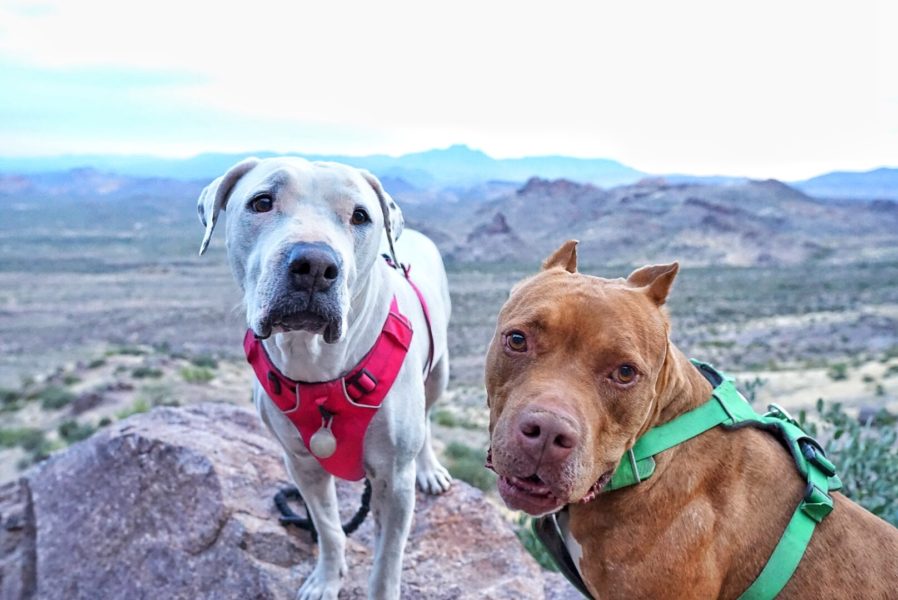 Many know Switzerland for its high standard of living and hail its healthcare system as one of the best in the world—in fact, it often ranks as one of the top 10 healthcare systems worldwide. However, while healthcare in Switzerland is universal, it is not free or public, which makes it very expensive.
Many know Switzerland for its high standard of living and hail its healthcare system as one of the best in the world—in fact, it often ranks as one of the top 10 healthcare systems worldwide. However, while healthcare in Switzerland is universal, it is not free or public, which makes it very expensive.
How It Works
All residents pay for their own health insurance. Unlike other countries, healthcare does not receive funding from government taxes. Even children and retirees must have their own individual health plan. The Swiss government mandates that health insurance providers cannot reject applicants for any reason and that all insurance providers offer a basic level of healthcare coverage to ensure that all citizens can obtain insurance.
The basic level of health insurance is identical across all Swiss insurance providers, covering expenses such as general check-ups and treatments, prescription costs, vaccinations, hospital visits and more. A basic healthcare plan covers around 80-90% of a person’s medical costs.
Health Insurance Companies
The role of health insurance companies in Switzerland is complicated. As private companies, they are competitive and seek profit. However, since law dictates that they all have to offer the same medical services under the mandatory basic health insurance, companies have limited competition.
Healthcare insurance companies have decreased in number within the past 20 years, from over 1,000 to less than 100. Their influence on political decisions is high since many government officials represent and defend their interests.
Pros and Cons
The Swiss government legally requires anyone staying in Switzerland for over 90 days to acquire health insurance, no matter the total length of stay. Healthcare in Switzerland is expensive, and people pay for most treatments out-of-pocket rather than receiving reimbursement later.
Switzerland’s high healthcare costs partially come from the fact that the government-mandated private insurance premiums largely fund the healthcare system. Healthcare providers charge more money from individuals to cover medical costs and business expenses since the government does not fund healthcare.
However, healthcare standards are high and citizens can receive excellent quality care across the country. Since basic healthcare is mandatory for all residents, every person has an entitlement to the same coverage and standard of care.
Swiss health insurance companies cannot deny insurance or charge inflated insurance rates for those with pre-existing conditions. Depending on customers’ age and insurance package of choice, some health insurance companies also will charge the same fee for the duration of the residency in Switzerland. Insurance rates may not increase even in the event of sickness or injury.
Comparison with Other Countries
The Organization for Economic Co-operation and Development (OECD) compared healthcare in Switzerland with healthcare in the 37 other OECD countries. It found that Switzerland’s model of universal health insurance coverage provides a wide variety of medical services and high patient satisfaction, but the percentage of Switzerland’s GDP that goes towards health is the second-highest in the OECD area.
Other OECD countries perform equally as well or even better in terms of healthcare at a lower cost. Switzerland spends the highest GDP, around 12%, on healthcare in comparison to other European countries. Swiss residents also spend an average of 10% of their salary on health insurance.
– Kathy Wei
Photo: Unsplash
The post An Overview of Healthcare in Switzerland appeared first on The Borgen Project.
Original Source: borgenproject.org

You love your dog, so it’s only natural that you want to take him along on vacation. Unfortunately, if you have a pitbull, breed discrimination can make that difficult. Below we’ll share our tips for traveling with pitbulls so you’re ready to hit the road!
But it’s also important to be aware that breed specific legislation affects more than just pitbulls. These laws, passed in jurisdictions across the country, target more than 100 breeds. But the breeds most often discriminated against are pitbulls, Rottweilers, Dobermans, German Shepherds, and Huskies — whether they’re purebred or mixed breeds. And the effects of these laws range from frustrating to devastating. So it’s important to know the rules and remedies before you go.

Tips for Traveling With Pitbulls
I didn’t know much about breed specific discrimination until after I adopted two pitties. Cool Whip and Hercules are perfect examples of the stereotypical description of “pitbull-type dogs.” Especially Hercules with his big blocky head, thick neck, muscular build, and that set of cropped ears!
While both dogs get a lot of compliments when we’re out and about, they also get nervous looks. Believing the hype, people cross to the opposite side of the street. Parents pull their kids behind them. And some places have passed laws to keep them away.

Breed Specific Legislation
Breed-specific legislation (BSL) are laws banning or restricting certain dog breeds from a location or activity. And the punishment for breaking one of these laws ranges from a fine to confiscation and execution of the dog. For us, knowing which places to avoid is literally a matter of life and death.
But don’t be discouraged! Though traveling with pitbulls — or any targeted breed — can be intimidating, we make it work, and so can you! Herc, CW, and I have covered thousands of miles. We’ve visited almost every state west of the Mississippi River and four Canadian provinces. If you ignore my poor sense of direction, our travels have always gone well. It just takes a little extra preparation.

Use BSL Resources to Map Your Route
The first thing to do is get familiar with the resources that will help keep you safe. For travels in the U.S., I count on the interactive breed specific legislation map from the Animal Farm Foundation. For Canada, the entire Province of Ontario bans pitbulls, but beyond there the Justice for Bullies Bullies map is my go-to. Both of these websites clearly identify areas that have (or have had) BSL and give an overview of the specific rules for you to review.
To start planning a trip, grab your atlas and lay out your route. Then pull up the BSL websites and circle any places you need to avoid in red. From there you can adjust your itinerary, sticking to places where your dog is welcome.
Be sure to take your atlas on your trip, so you can easily refresh your memory on places that discriminate against your dog.
READ MORE ⇒ Ruka the Pitbull’s Road Trip from Alaska to Pennsylvania

Protect Yourself and Your Dog from Breed Discrimination Laws
When deciding whether to travel through or stay in an area with BSL, make sure you understand the specifics of the local laws. Are your dogs allowed to stop in the area for potty breaks? Can you stay overnight with your dog? Does your dog have to be muzzled or meet any other requirements while out in public?
Here are some steps you can take to avoid any possible conflicts while traveling with a pitbull:
If you will be traveling to or through a jurisdiction with a breed specific law, call the local animal control office to get the most current information about the restrictions and requirements.
If your dog looks like one of the affected breeds, you might consider carrying DNA results from your vet proving your dog’s lineage.
Remember that websites might not be completely current as the laws are changing constantly, so plan for the unexpected. If your dog is an affected breed, or could be mistaken for one, always be prepared to comply with muzzle, leash, and proof of insurance requirements.
If you find that you have inadvertently violated a breed-specific law, be polite and do your best to bring yourself and your dog into compliance – even if that means immediately leaving the jurisdiction immediately.
Once you know the rules, you can make plans to safely navigate through or around areas with BSL. Typically, I choose to bypass these places altogether. I’d rather spend my time and money in destinations that happily welcome my dogs.

Call Ahead to Confirm Pet Polices
Keep in mind that discrimination doesn’t always stop at the state or city level. Some pet friendly businesses impose their own breed bans. For example, there are hotels, vacation rentals, and campgrounds that don’t allow certain dog breeds. Other lodgings take a less obvious approach, using weight limits to weed out larger dogs.
The same goes for boarding and daycare facilities. I was finalizing the details of a daycare reservation when I happened to ask if it mattered that my dogs were pitties. It turned out that the facility’s insurance did not cover pitbulls, so I had to find another option. It sometimes takes a little extra digging, but asking the most obvious questions can save you a lot of stress once you’re on the road.
At GoPetFriendly, we collect detailed pet polices for the businesses listed on our website, so you’ll know whether your dog is welcome. Just remember to call before leaving home to confirm that the pet policies haven’t changed.
If you’re looking for places to stay where your dog will always be welcome, watch for government-owned campgrounds. Whether it’s a national park, national forest, Army Corp of Engineers campground, or state park, you’ll never run into breed restrictions! The Kimpton hotel chain also welcomes pets of all breeds and sizes, and they never charge a pet fee.
READ MORE ⇒ State Parks With Pet Friendly Cabins, Campgrounds, Beaches And More

Be An Ambassador
I completely understand how frustrating and disheartening it is when your dog is not welcomed because of his breed or how she looks. Traveling with pitbulls requires additional research to ensure your dog is greeted kindly, but you CAN get out there and have fun together. And, when you do, you and your dog have the opportunity to be ambassadors for your breed. Show the world that all dogs deserve to be treated fairly!

Cool Whip and Hercules love meeting people, and I’m happy to let people pet them and experience what pitbulls are really like. Aggressive bully breeds? Nah. The white one will promptly plant her bum on your feet hoping for scratches. And that squirrely brown fella with little ear nubs thinks he’s a 70-pound lap dog; he gets so excited to see people that he can’t stop licking things.
My hope is that by having a positive interaction with my dogs people will realize that every dog is an individual. They should be judged by their character and behavior, not with stereotypes and assumptions. In a way, breed discrimination inspires me to take my dogs traveling even more. If my dogs can break down even just one negative assumption, the extra effort is worth it!
We at GoPetFriendly strongly oppose Breed-Specific Laws.
Laws that discriminate against particular breeds of dogs are completely unacceptable. There is no evidence that breed specific laws are effective in preventing dog bites, but there is evidence that they have resulted in the senseless killing of thousands of homeless animals and beloved pets. We believe that enacting aggressive dog laws that are not biased toward a specific breed result in more enforceability and are less prejudicial. We are particularly opposed any law resulting in the confiscation and execution of a dog that has done no harm.
DO MORE TOGETHER
Lodgings | Destinations | Trip Planner
The post Tips for Traveling with Pitbulls appeared first on GoPetFriendly.com.
Original Source: blog.gopetfriendly.com
 Many know Switzerland for its high standard of living and hail its healthcare system as one of the best in the world—in fact, it often ranks as one of the top 10 healthcare systems worldwide. However, while healthcare in Switzerland is universal, it is not free or public, which makes it very expensive.
Many know Switzerland for its high standard of living and hail its healthcare system as one of the best in the world—in fact, it often ranks as one of the top 10 healthcare systems worldwide. However, while healthcare in Switzerland is universal, it is not free or public, which makes it very expensive.






